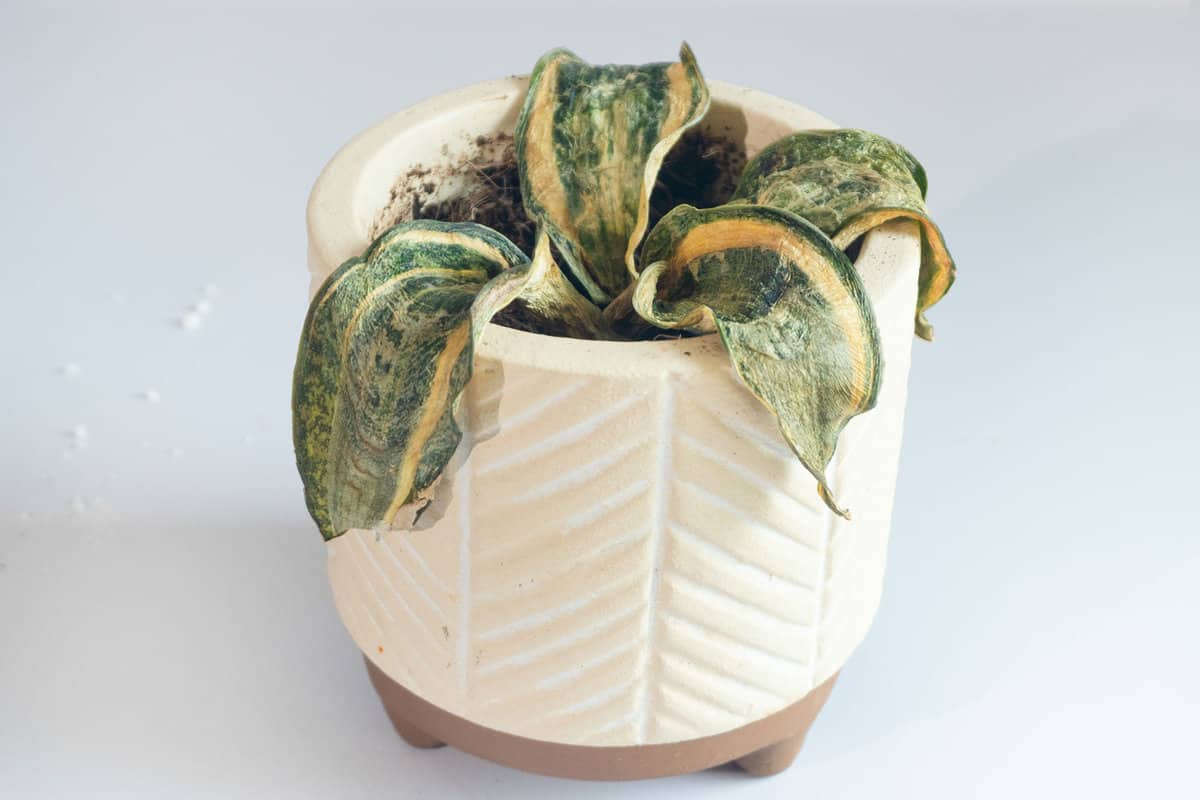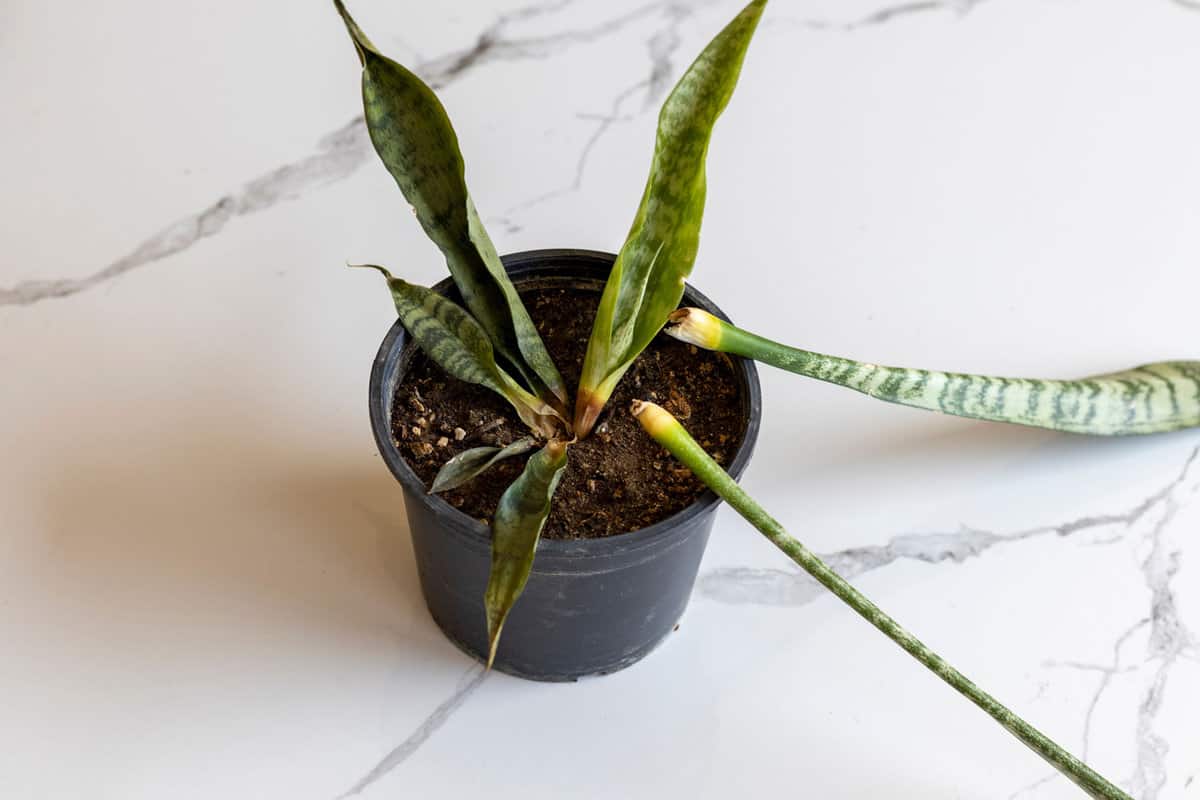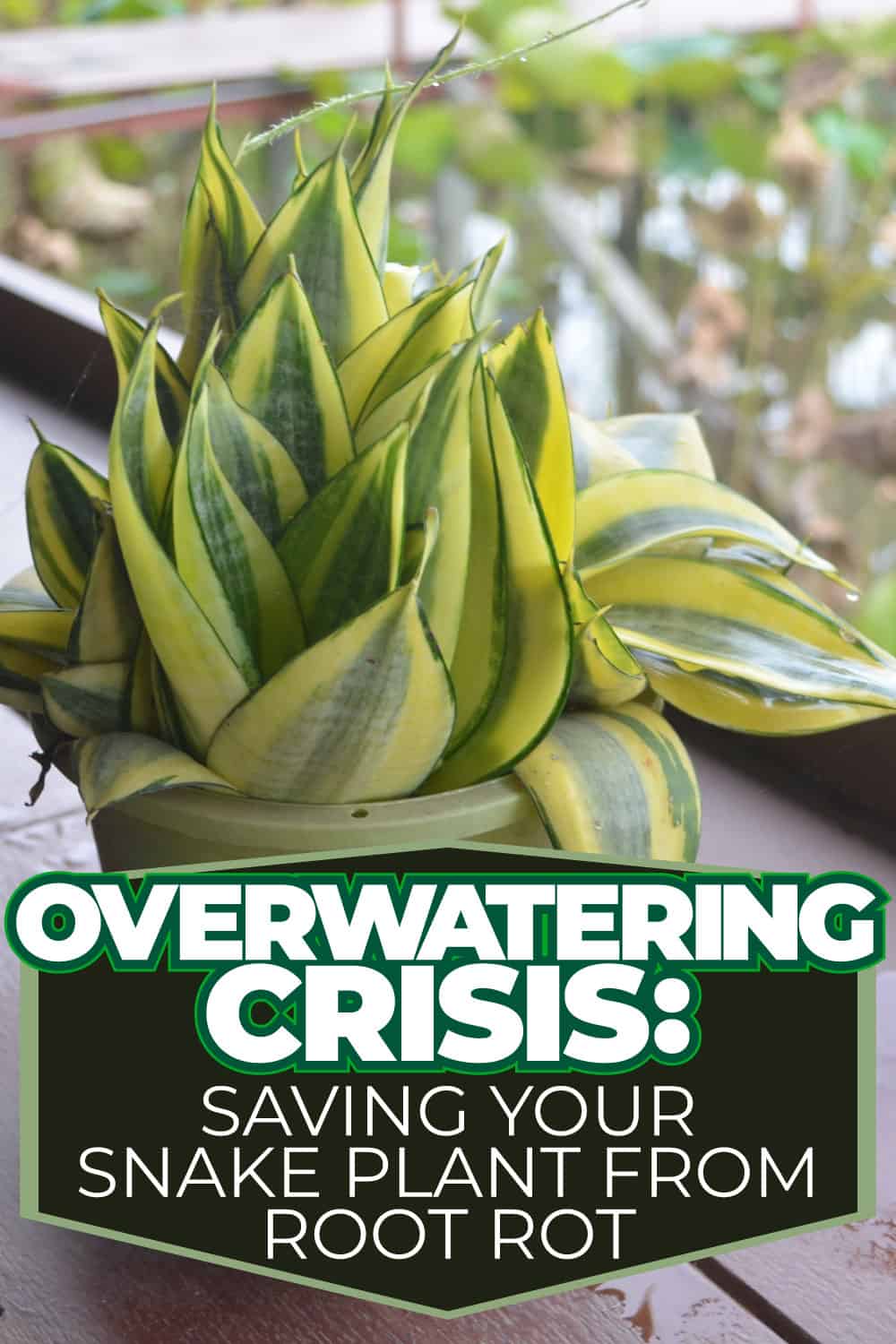Snake plants are low-maintenance, resilient plants, but they can be prone to a common gardening issue: overwatering.
When you give your snake plant too much water, it can result in the dreaded root rot, which can severely damage or even kill your plant if not addressed in time.

To save your snake plant from the effects of overwatering, you need to be aware of the signs and symptoms of root rot.
While you're at it, it can help to also know the best practices for watering and care.
Overwatering: A Common Gardening Mistake
Overwatering is one of the most common mistakes gardeners make, especially with resilient plants like the snake plant.
When you overwater a plant, you're not just giving it extra water; you're actually suffocating its roots.

As water fills the air pockets in the soil, your plant's roots can struggle to get enough oxygen, leading to various problems.
One major consequence of overwatering is root rot.
This occurs when the excess moisture in the soil creates an environment conducive to fungal growth, causing the plant's roots to decay.
Additionally, overwatered plants are more susceptible to pests and diseases.
In a weakened state, they struggle to fend off attacks, making it more challenging to bring them back to full health.
Snake Plant's Water Needs
Snake plants are hardy and drought-tolerant, which means they can handle infrequent watering.
To ensure you're providing the proper amount of water, follow these guidelines:
Check the Soil Moisture
You can check the soil's moisture by feeling it. Stick your finger about 1-2 inches into the soil. If it feels dry at that depth, it's time to water your snake plant.
It's better to wait until the soil is dry before watering again.
Use Well-draining Soil
Snake plants thrive in well-draining soil that allows water to flow through easily.
Opt for a potting mix containing sand, perlite, or vermiculite to promote optimal drainage.
Check out this perlite and coco peat potting mix on Amazon.
Choose Proper Pots
Ensure your pot has drainage holes to prevent standing water.
A terra-cotta or ceramic pot can also help absorb excess moisture from the soil.
If you want to learn more about which pot is best to use, you can browse here: What’s The Best Pot For A Snake Plant?
Water Less Frequently During Winter
Snake plants go into a dormant phase in the colder months, so they require less water. It's crucial to reduce your watering schedule during this time.
Remember, your plant will forgive you for underwatering, but overwatering can cause irreversible damage.
You can read here for more information on best practices for watering snake plants: How Often To Water Your Snake Plant
Effects of Overwatering
Overwatering your snake plant can lead to wilting, yellowing of leaves, and leaf burn.
When you notice these signs, it's time to take action and adjust your watering habits.
Excess water in the soil can reduce oxygen, which in turn damages the fine roots of the plant and prevents it from taking up water.
This eventually leads to further problems like root rot and crown rot.
Symptoms of Root Rot in Snake Plants
When root rot is affecting your snake plant, you may notice certain changes in its appearance.
The roots will become dark and stunted, making the plant easier to pull up from the soil.
This is a clear indication of root rot, which is often triggered by too much moisture on the roots and prolonged exposure to wet conditions.
Can Overwatered Snake Plants Be Revived?
Yes, overwatered snake plants can be revived if you act quickly and take the appropriate steps to save them.
Identifying the symptoms of root rot early on, such as yellowing leaves and a mushy base, is crucial for recovery.
Here are the basic recovery steps:
1. Remove the Plant
Carefully remove your snake plant from its pot, ensuring not to cause further damage to the roots.
2. Trim Affected Roots
Using clean, sharp scissors or pruning shears, trim away any brown or mushy roots, leaving only the healthy, white roots intact.
3. Let the Roots Dry
Allow the remaining healthy roots to dry out for a few hours, which helps to prevent further fungal growth.
4. Repot the Plant
Place your snake plant in a clean pot with fresh, well-draining soil, ensuring the remaining healthy roots are adequately covered.
5. Water Sparingly
To help your snake plant recover, water it sparingly and make sure to check the soil moisture before watering – it should be dry at least two inches below the surface.
Using Fungicides
Fungicides can help in treating root rot, but they should be used as a last resort.
Look for products specifically designed for treating root rot, and follow the instructions on the label carefully.
Apply the fungicide to the affected roots and soil, making sure to adhere to the recommended dosage.
Try this Noot Rescue soilless rooting mix root rot treatment on Amazon.
Keep in mind that using fungicides may not guarantee the complete recovery of your snake plant, but it can help minimize the severity of the problem.
Additional Care Tips for Snake Plants
Snake plants prefer bright to medium indirect light but are tolerant of low light conditions.
They should be kept away from direct sunlight as it can cause their leaves to burn.
They are tolerant of low humidity conditions, making them suitable for indoor environments where humidity might not be high.
Snake plants are generally very low-maintenance and hardy, making them an excellent choice for beginners or those with busy schedules.
They are drought-tolerant and can thrive even when neglected to some extent.
Prevent Root Rot Easily
It's easy to get a bit too generous with the watering can, especially when we're nurturing something as captivating as a snake plant.
However, overwatering can sneak in and cause root rot before we know it.
But don’t worry, with a little knowledge on snake plant care, you can easily keep root rot at bay.
Use well-draining soil and give water only when the top soil has dried out, and you'll be on track to nurturing a healthy snake plant.




should i water my snake plant by putting water in the dish the pot is on ?? or water in the top of the pot?